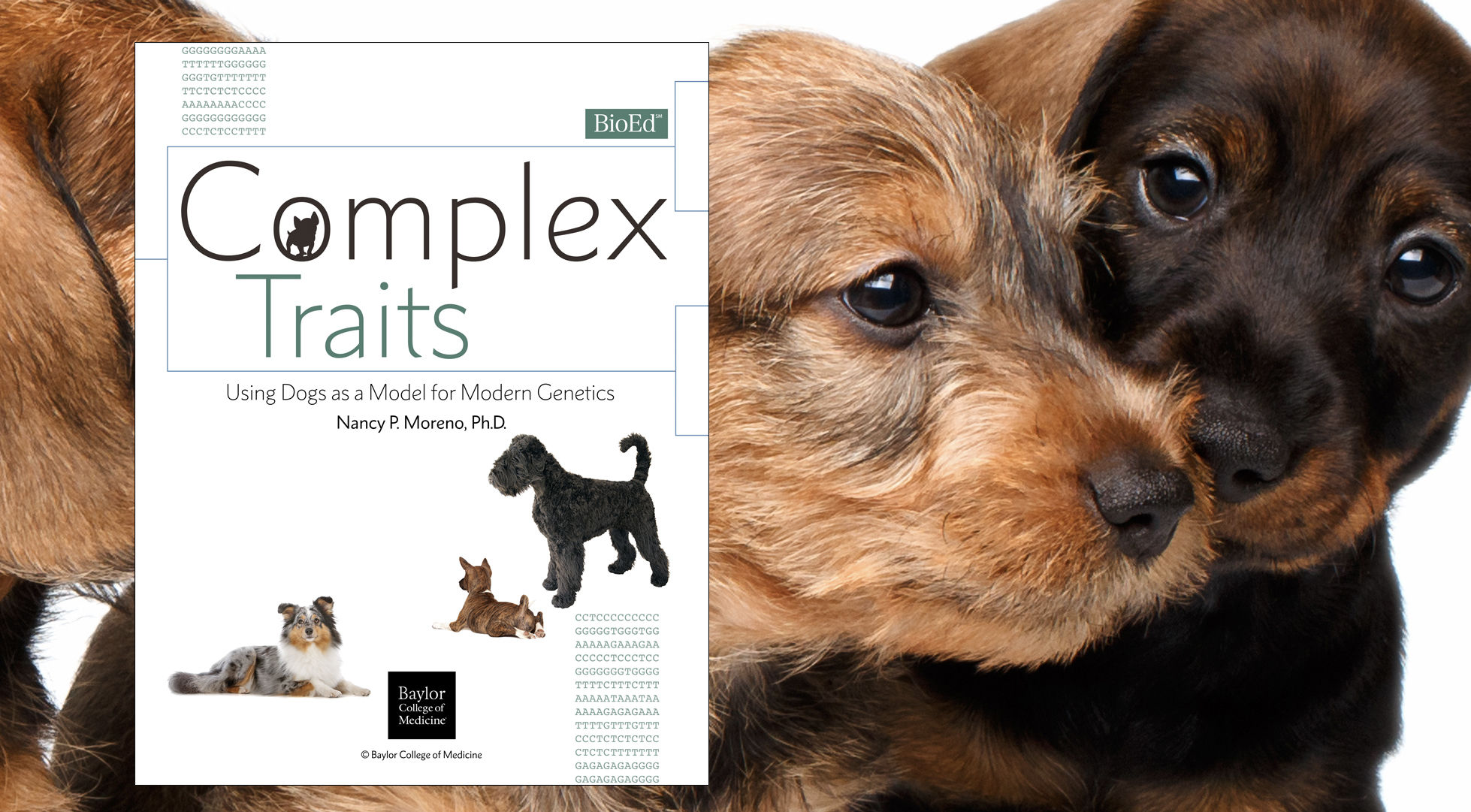Gene U Project Update: Complex Traits Curricular Unit
 Image © Baylor College of Medicine | BioEd Online.
Image © Baylor College of Medicine | BioEd Online.
Project Update: The Gene U project’s Complex Traits guide for teachers and associated classroom slides are available for free viewing or download from BioEd Online (www.bioedonline.org).
Domestic dogs exhibit immense variety in size, shape, coat color and texture, and behavior. This variability is a product of selective breeding by humans, conducted to yield desirable genetic changes or mutations. Today, there are more than 400 distinct breeds of dogs. Complex Traits contains lessons that allow students to investigate and learn about modern genetics using the domestic dog as a model. The following activities are available.
Dogs — A Model for Modern Genetics – What is a phylogenetic tree and how does it help determine relationships between dogs and their closest relatives?
Genotyping a Mixed Breed Dog – Can genetic testing uncover the origins of a mixed breed dog? How are modern dog breeds related to one another?
Mapping a Mutation – What is the genetic code, and what are the effects of small substitutions within the code?
Genotypes and Phenotypes – What is the difference between genotype and phenotype, and what process can change a phenotype?
Categorizing Hair Types in Dogs – How many genes regulate hair type in dogs?
Genetic Testing and Designer Dogs – Do genetic mutations produce desirable characteristics or harmful effects in different dog breeds?
Though originally created for middle school students, activities in this guide also may be used with high school students.






